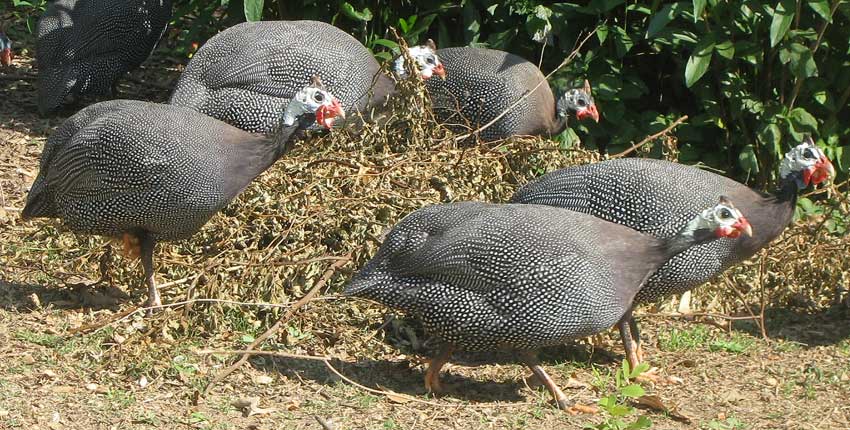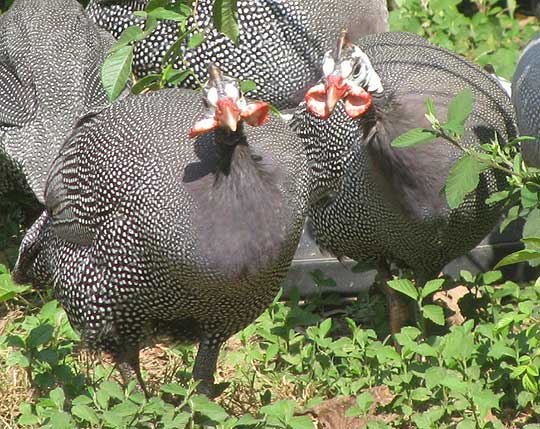Excerpts from Jim Conrad's
Naturalist Newsletter

from the the May 6, 2012 Newsletter issued from the woods of the Loess Hill Region a few miles east of Natchez, Mississippi, USA
THE NEIGHBOR'S GUINEAS
A neighbor up the gravel road keeps maybe a dozen Helmeted Guineafowl, normally just called guineas, NUMIDA MELEAGRIS. They run around the yard and along the road in a tightly-knit flock pecking at seeds, spiders, insects, whatever. You can see their normal stance, their teardrop-shaped bodies tilted forwards and their small, ornate heads bobbing on spindly necks as they eye every detail of the ground, at the top of this page.
Back on the farm in Kentucky one spring morning my father came in with a small flock of guineas, having heard that they lay lots of thick-shelled but delicious eggs, that their plump bodies also are good to eat, and thinking that they were about the most exotic looking critters he'd ever seen. Nobody had told him, however, how at the slightest disturbance they'd break into a chorus of loud, shrill calls, especially in early mornings, the males incessantly calling kek-kek-kek and the females screaming buckwheat buckwheat buckwheat. We were accustomed to quietness back then, so after a couple of weeks we were mightily relieved when somebody took the birds off our hands.
Guineas seen here are domesticated races of a wild species native to southern Africa. They're members of the "Upland Game Birds" order, the Galliformes, along with turkeys, quail and pheasants. In the wild, guineas normally are monogamous, mating for life, but domesticated ones tend to be a bit looser. The Spanish brought guineas into the Americas in the early 1500s. In recent decades breeders have developed many races.
You can have a better look at the helmets, or "casques," atop their heads and their widely flaring wattles below:
